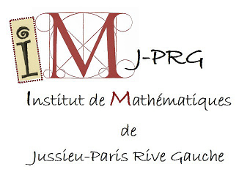| Résume | A conjecture of Mazur, Tate and Teitelbaum (MTT) compares the order of vanishing of the $p$-adic $L$-function attached to an elliptic curve~$E$ at $s=1$ to that of the Hasse-Weil $L$-function (where the latter is called the analytic rank of~$E$). When $E$ has split multiplicative reduction at~$p$, the $p$-adic $L$-function always vanishes at $s=1$ and MTT conjectured that its order of zero is exactly one more than the analytic rank of~$E$ in that particular case. In 1992, Greenberg and Stevens proved this conjecture when the analytic rank is zero. I will explain a proof of the MTT conjecture when the analytic rank is one (modulo the non-degeneracy of Nekovar's $p$-adic height pairing). The main ingredient is the $p$-adic Gross-Zagier-style formula we prove for the $p$-adic height of the Beilinson-Kato elements. If time remains, I will discuss an extension (joint with D. Benois) of this result to the case of a modular form~$f$ of weight greater than~2. The main difficulty in this case lies in the fact Deligne's Galois representation~$V$ attached to~$f$ is no longer $p$-ordinary in the presence of "extra zeros". This difficulty is circumvented relying on the fact that the (local Galois representation)~$V$ admits a triangulation over the Robba ring (thence it is ``ordinary'' in the level of the associated $(\phi-\Gamma)$-modules). |

